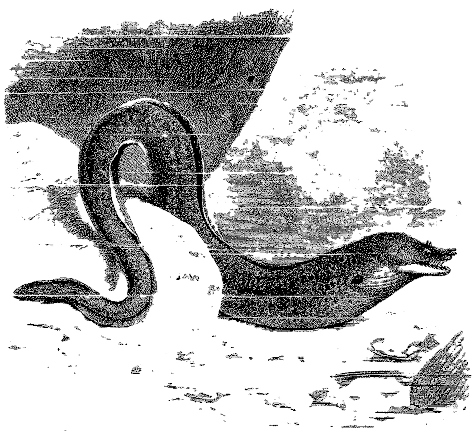
"Foster's Island Rule Applied to Lake Monsters"
Cryptozoology is a favorite subject of mine, and anything on this topic will get my attention. Of special personal interest are lake monsters, particularly those of the sea serpent variety. These freshwater sea serpents include the famous Loch Ness monster and the legendary water horses of Europe, with their New World cousins like Champ or Ogopogo. Based on descriptions, locations, and other information, I propose that these lake monsters are unusually large specimens of a known species caused by "insular gigantism," based on Foster's Island Rule theory.
Foster's Island Rule proposes that mainland animal species that migrate onto islands will grow larger or smaller due to scarce resources and a lack of predation. A small animal from the mainland will become much larger, and a large mainland animal will become much smaller on an isolated island. If these animals survive, they will eventually become different enough to the point of being considered new species. The growth of smaller animals into much larger ones is due to the island rule concept called "insular gigantism". This is what gives rise to animals like the giant Galapagos Tortoise. The isolation of the island environment allows such animals to grow beyond their normal size up to the maximum their physiology will allow, given what the island habitat can support.
This island rule could explain these lake monster sightings, given the fact that a lake is analogous to an island to a water-dwelling animal. After considering aquatic animals like catfish, sturgeon, eels, and amphibians as candidates for gigantism, I have narrowed it down to the American and European freshwater eels. Other than size, the freshwater eel fits the description, occupies the same range and environment, and has the instincts and traits reported of lake serpents. These eels breed in the Atlantic Ocean, and after being born, they migrate into freshwater where they mature into adults. They live for between ten and thirty years in freshwater until they return to the ocean to breed and die. The females can range in size from around two feet to as long as four or five feet. Its migration is not restricted to returning to a specific river, so it will take advantage of any avenue to travel upstream. In the US, the American eel has expanded westward from the Atlantic Ocean due to human alterations to the watershed. The same can be said of the European eel, except they would come in from the west and expand to the east. As much as freshwater eels may have been expanding, they haven't been doing very well. Both the American and European freshwater eels are still under pressure from habitat loss. Also, freshwater eels are not only preyed upon but also harvested as food. Once fairly common, both European and American eels are now becoming rare and are close to being classified as a threatened species. The eel has a bad reputation in the States compared to Europe, and we don't have that seafood on our menu much either, so not too many people in the U.S. would know that the freshwater eel is having problems. Foster's Island Rule Applied to Lake MonstersThis colonial expansion into new waterways makes it more likely that an eel could become landlocked in an isolated body of water similar to a Foster's island scenario. Large-scale flooding and other situations could strand a small population of eels in a lake with few natural predators. A small percentage of eels in any population can develop traits that arrest final maturity and cause insular gigantism to occur over years of isolation. Because they don't fully mature and return to the ocean to breed, they would eventually die off until more eels made it into the lake. This would make lake monster sightings a rare occurrence, with decades between sightings if it were seen for more than a few seasons at a time. Other than its natural size, an eel fits the description. It's nocturnal and hides in burrows under the lake bottom during the day. Due to their migratory habits, they are found in the same range and habitats as lake monsters. Some questions to answer that can support this theory are, "Is it possible for a freshwater eel to grow eight times its normal size?" and "If this growth is possible, can individual eels do this in a single lifetime due to regressive traits or environmental factors?" Although I haven't heard Forster's Island Rule being mentioned in lake monster investigations, the idea that these are giant eels is nothing new and is gaining popular support in Europe. These investigations have shown that eels without access to the ocean will continue to grow until they eventually die. It is believed that genetic variation in the population is the primary reason they can become gigantic, however, the Foster's Island Rule explains the mechanism making this happen, or how it is being triggered to occur biologically. The best way to explain this is with a quote from the movie "Big Fish," which states, "The biggest fish in the river gets that way by never being caught." Comment about this article on the Epress Forum Board .
|

